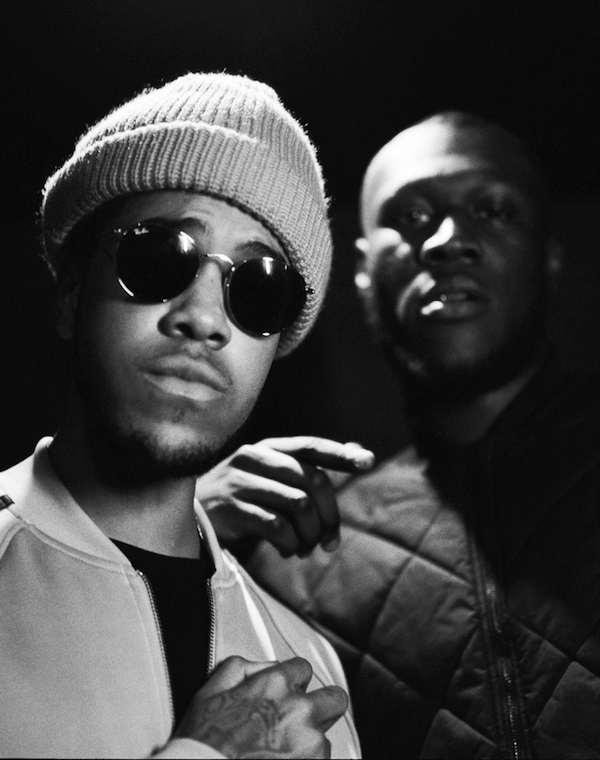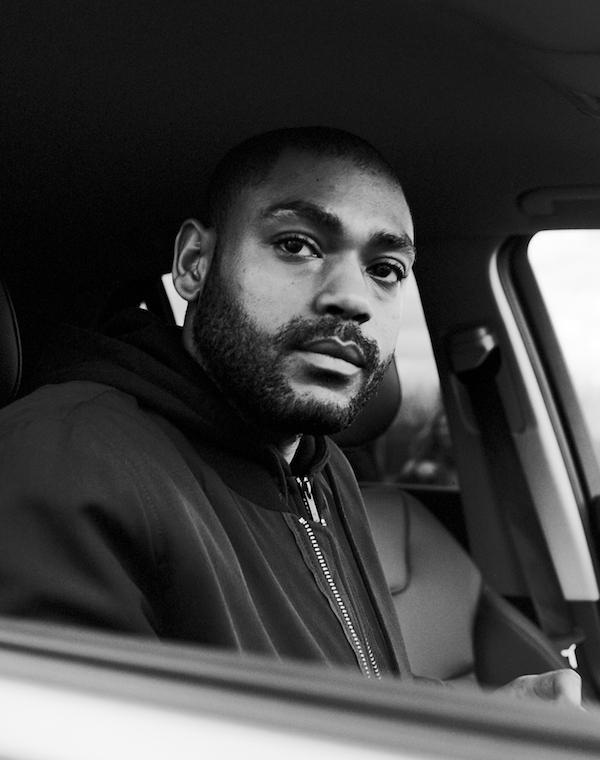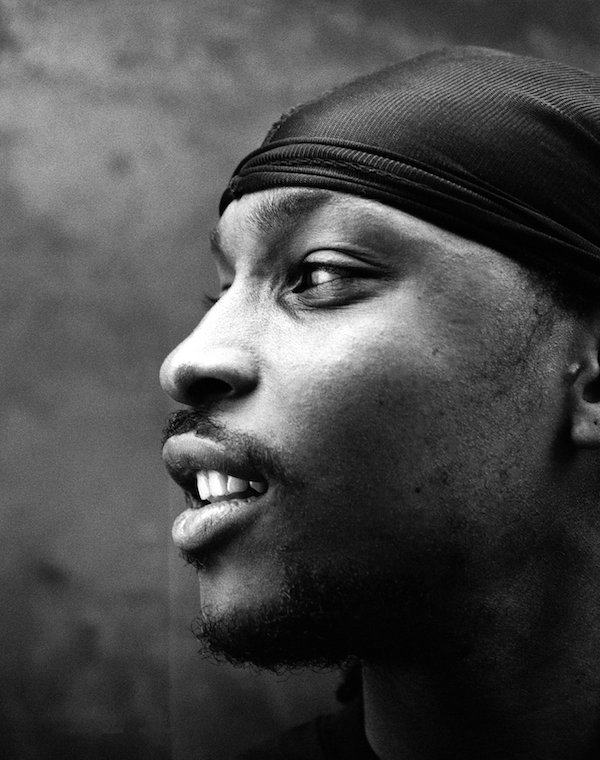
Mac DeMarco is back, and he’s unsurprisingly low-key about it. Yesterday, the recent-ish New York-to-Los Angeles transplant announced his third album, This Old Dog, the follow-up to 2015’s understated Another OneEP and 2014’s slacker odyssey Salad Days. He also shared two lead singles off the new record, the dreamy title track and the drum machine-driven “My Old Man.”
Reached by phone later that day, between morning coffee and plans for a lunch of bánh mì with a friend, DeMarco seems characteristically unfazed by the pressures of a third LP. “Choruses? Fuck a chorus,” he says of the album. “What else? Bridge? I don’t think I've done a bridge on the last three albums.” Expect mainly acoustic guitars, along with plenty of synths—“but they are, like, pretty mellow.” DeMarco talked with Pitchfork about the making of This Old Dog, his take on Star Wars: Rogue One, and more.
For this album, I understand you gave the songs a little bit more time to breathe after you demoed them. Did that affect how they have turned out?
Mac DeMarco: That's the thing, a lot of the songs I did demo in New York, and then kind of had them sit. And then I tried to redo a bunch, because I moved to Los Angeles this summer. What I found was the more I tried to demo stuff, the less I liked it. So what I ended up doing was using a lot of components of the demo recording. That song “This Old Dog” that came out today, that's pretty much just like I recorded it on the floor of my bedroom in New York. I redid the drums and the bass.
Is this all you playing on the record?
Yeah, it’s all me. The only time I had somebody in this time was, my friend Shags [Chamberlain, who has worked with Ariel Pink, Weyes Blood, and the Avalanches] was here when I was mixing. It was the same as any other time, I guess. The drums are still sloppy. Everything is still sloppy. It's definitely me playing.
What else can you tell us about the album?
I think my favorite song on the record is the first song from side two, “Dreams From Yesterday.” I tried to do a bossa nova album when I was younger, maybe when I was 20 or something. But that one's a little bit bossa nova-y sounding, I suppose. There are two others on side B, one called “One More Love Song” that has real acoustic piano in it, which I’ve never recorded before. And then “On the Level”... it fits on the album, but it's a little bit different—kind of a sister song to [Salad Days standout] “Chamber of Reflection.”
It’s definitely one of those things where the album makes more sense as a whole, a full thing rather than single, single, single. Which was funny, deciding on the singles, but you know. We chose what we chose. Anyway, it's not up to me to decide.
You and Jon Lent from your band have been covering everybody from Prince to James Taylor. Were you listening to anything in particular that influenced this new one?
When I started writing the record, yeah, I was listening to a ton of James Taylor and a ton of Paul Simon. I kinda had just gotten into James. I knew how huge he is, but I didn’t know a lot of his stuff. But I always listened to Paul. The problem with listening to guys like that is like, “Yeah, cool, I’ll try to do a more acoustic-y sounding record.” These guys have written, like, some of the greatest pop songs of all time! So, yeah, a little hard to emulate, it’s almost frustrating. I mean, you try, but it’s something to reach for, so it’s cool.
What was it like being covered by the guy from “Stranger Things”?
You know, I liked it and thought that it was great. I have texted with him [Finn Wolfhard, who plays Mike Wheeler] a little bit, and he's a really nice dude. It’s pretty wild. I like the show, too. He’s so young [14]!
Last fall you and your whole band performed live dressed as Will Forte’s character from “Saturday Night Live,” MacGruber. How did that come about?
We did Conan O’Brien’s show one time, and Will Forte was the guest. We found out earlier, and Andy [White], my guitarist, is like the biggest MacGruber fan on the planet. We watch MacGruber all the time on tour. But when we got there—it’s weird. We’d never played on TV. They keep you in this cold green room, and Conan O'Brien and Andy Richter walked by. It’s terrifying. So we were too afraid to talk to Will. We blew it.
So then we played this festival, Festival Supreme, which is run by Jack Black, and Will was performing there. It was near Halloween, so we thought, “Okay, we’ll all dress as Will’s character, and then he won't be able to ignore us." We eventually did meet him. A really charming and nice man! It was maybe a little creepy on our side, but hey, you know.
You like Star Wars so much that you even wrote a review of The Force Awakens. Any thoughts on the newest Star Wars movie, Rogue One?
I liked it a lot. I know there’s a lot of haters. I thought it was great.
Here’s my opinion on it: It didn’t have to happen. It’s a story that didn't have to be told, but for me, and especially Jon, and Andy that plays in my band, we’re big Star Wars fans. We watch Star Wars even more than we watch MacGruber. And for people like us, it’s kind of like, “Hey, why not?” You know, why not have it? It’s nice because it doesn't really follow the set-in-stone 2017 movie routine where it’s like, okay, set it up for something else, you know? It’s not like, “We’ll only give them half the fun, then they gotta come see the sequel.” It's cut-and-dry. It's just there. That's all it is. See you later. No problem.
Some elements of it were a little jarring for me. I saw it the night before Carrie Fisher passed away, so it was a bit strange to wake up the next day. Rest in peace. Rest her soul, you know, it’s just crazy, but I’m a fan. I’m a fan of the new one, and hopefully the one next year.
You did a Planned Parenthood benefit a year ago. I’m not expecting your album to be like, “Oh, now Mac’s political”—it’s not really your style of songwriting. But is this kind of thing on your mind right now?
I think it's kind of hard for anybody to not really be political these days, but I don’t think the album really reflects that too much. But, you know, I live in the States and things are really crazy right now. I try not to talk about it publicly too much, but just to make a difference in my immediate community instead. But it’s super crazy. My heart goes out to all the people that are feeling super insane, or being prosecuted, or whatever right now.
How do you plan on touring these new songs—full band or alone?
I’ll bring my band, for sure. Usually when I’m doing a record, I keep that in the back of my mind. This time I forgot about that part. So it’s gonna be interesting. It might sound a little bit different than on the record, but I think it will be a fun and cool learning experience to work them out in some way or another. There’s a lot of acoustic guitar on this record. I’m having nightmares about feedback.
Oh also, do you have a dog?
Actually, I’ve never had a dog in my life. I’ve had a lot of cats, and “This Old Cat” doesn’t really ring the same way.






























